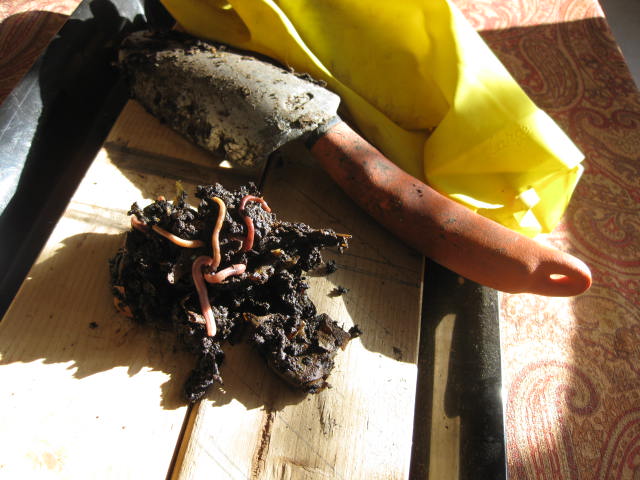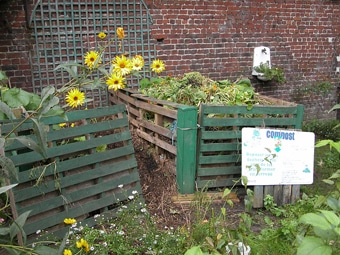Updated: March 28, 2020
Composting grass clippings is so easy, why not give it a try? If you live in the suburbs, as most SHF readers do, you probably have more than your fair share of grass clippings. But do you recognize that grass clippings make up far too much of what goes in the trash?
The landfills of the U.S. are bloated with waste, and homeowners have a responsibility to mitigate the problem.
The first step begins when you mow your lawn.
Grasscycling
Grasscycling, a.k.a. mulching grass, is an economical alternative to bagging grass clippings while mowing the lawn. All you have to do is … nothing.
That’s right, let the blades lay where they may fall. Recycled grass clippings return nitrogen, potassium and phosphorus to your lawn—that’s up to 25 percent of the lawn’s fertilizer requirements, according to the University of Missouri. Grasscycling also takes considerably less time and effort.
Five reasons you should compost grass clippings
Grass clippings naturally decompose and feed your lawn with high-nitrogen fertilizer.
- The clippings add water-efficient mulch and engender soil aeration by way of earthworms. Grasscycling is like a free, cannibalistic method of fertilizing—the circle of life.
- Grasscycling reduces tons of organic waste that would otherwise be hauled off to landfills. It’s completely unnecessary to throw away what you can easily use.
- Any lawn mower can grasscycle. As long as the blades are sharp, your mower is good to go—let the grasscycling commence.
- Less work, less cost, more eco-friendly. Isn’t that the dream? With grasscycling, you’ll likely save at least a half hour during mowing and save money by axing the need for more organic fertilizer or compost.
- A surface layer of grass clippings slows evaporation, thus reducing loss of water. This in turn reduces the need for fertilizer.
Let’s take a sec to get the legal words out of the way. This article may contain affiliate links. That means if you click and buy from my partners, I will make a tiny amount of money at no cost to you. This in no way affects my recommendations.
Composting grass clippings and compost piles
As organic materials decompose from microbes and insects, compost rich in nutrients is born. But composting, done right, is a bit more complicated than throwing a mound of organic junk in a bin. You should properly layer and maintain your compost materials on the piles.
Related: Cover Crop in the Vegetable Garden.
First, you’ll collect organic materials. Grass can be a big part of this. You might want to install a grass catcher on your mower if it doesn’t already have one.
Keep in mind that grass should make up no more than 40 percent of the pile if you don’t want it to smell. Next, you should mix in high-carbon browns to balance the amount of high-nitrogen grass in your pile.
Browns, which include leaves, straw, hay, paper and other carbon rich materials, should make up about 60 percent of the pile.
Mix all these ingredients together and water lightly so that the microbes will be happy and multiply while they are breaking down the pile. You can add an optional top layer of soil to ensure that the pile has the right microbes at the beginning of the process.
Composting grass clippings & layering materials
The University of Minnesota suggests layering your compost pile in the following order:
- 1 inch of soil
- 1-2 inches of fertilizer or manure
- 8-10 inches of Organic Materials (grass, weeds, leaves, straw)
You should perform regular maintenance to expedite decomposition and prevent foul odor. Keep the pile moist and turn it occasionally—either by inverting compost segments or moving it into another bin.

How to Improve Soil
All the ways I know to improve your soil.
When is it ready?
If you are ambitious, you can insert a thermometer into the pile: 130-150 degrees Fahrenheit is ideal for the fastest decomposition and to kill weed seeds.
You can tell when compost is ready to use when it:
- No longer increases in temperature after mixing
- Doesn’t have recognizable materials — everything is brown and crumbly
- Smells like dirt with no foul smell
If the pile is properly cared for, it should be ready in two to four months. Cold piles often take longer.
When it’s ready, you can apply the compost as top dressing for your plants. Or you can mix it into the top layer of soil. Amazingly, finished compost will help fix almost any soil problem.
If you spread a thin layer of compost over your grass each year, it will go a long way towards helping to make sure it stays healthy without the need for chemical fertilizers or pesticides.
Related articles you might enjoy:
Suburban Hobby Farmer is a participant in the Amazon Services LLC Associates Program, an affiliate advertising program designed to provide a means for sites to earn advertising fees by advertising and linking to amazon.com.
